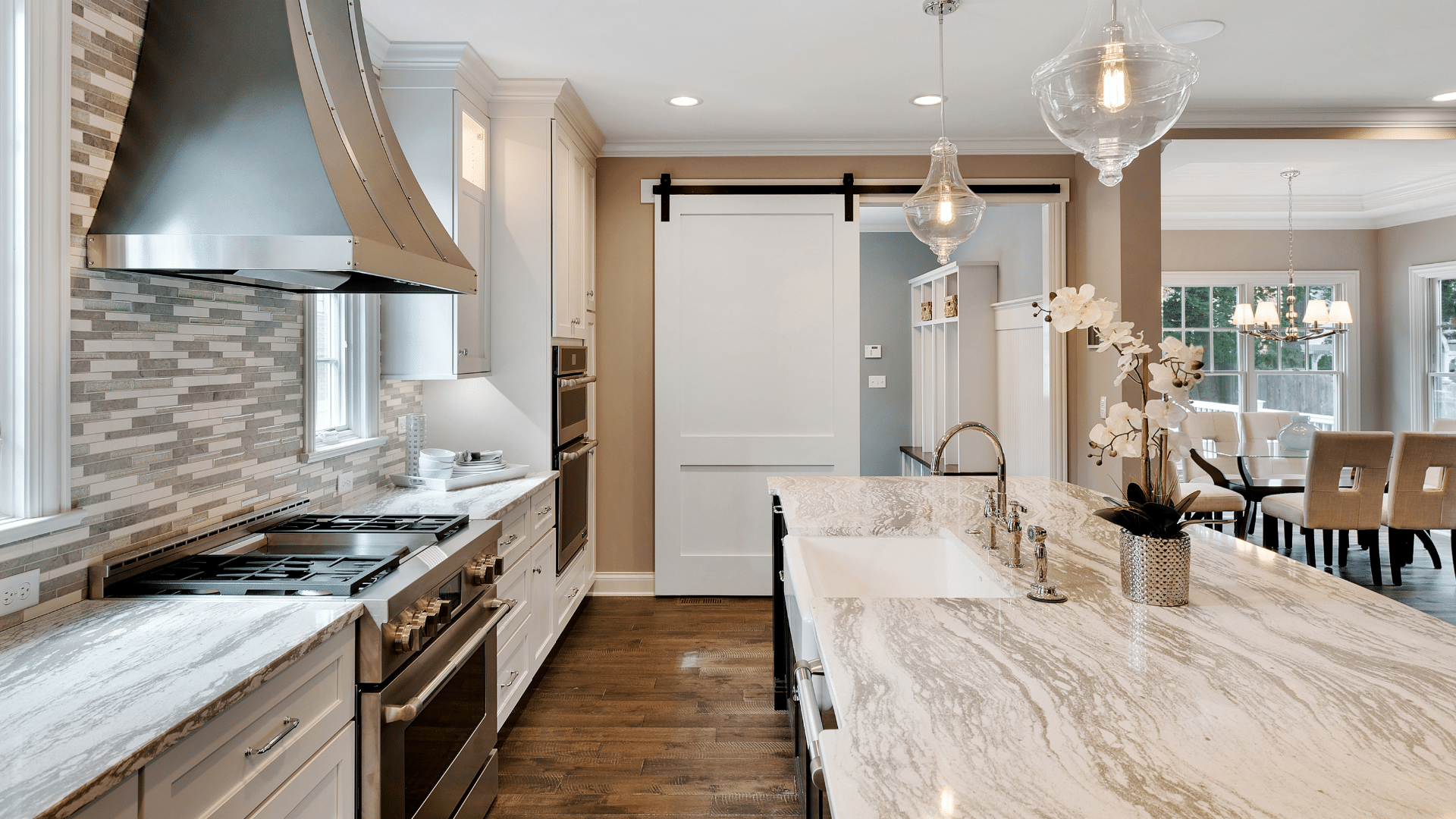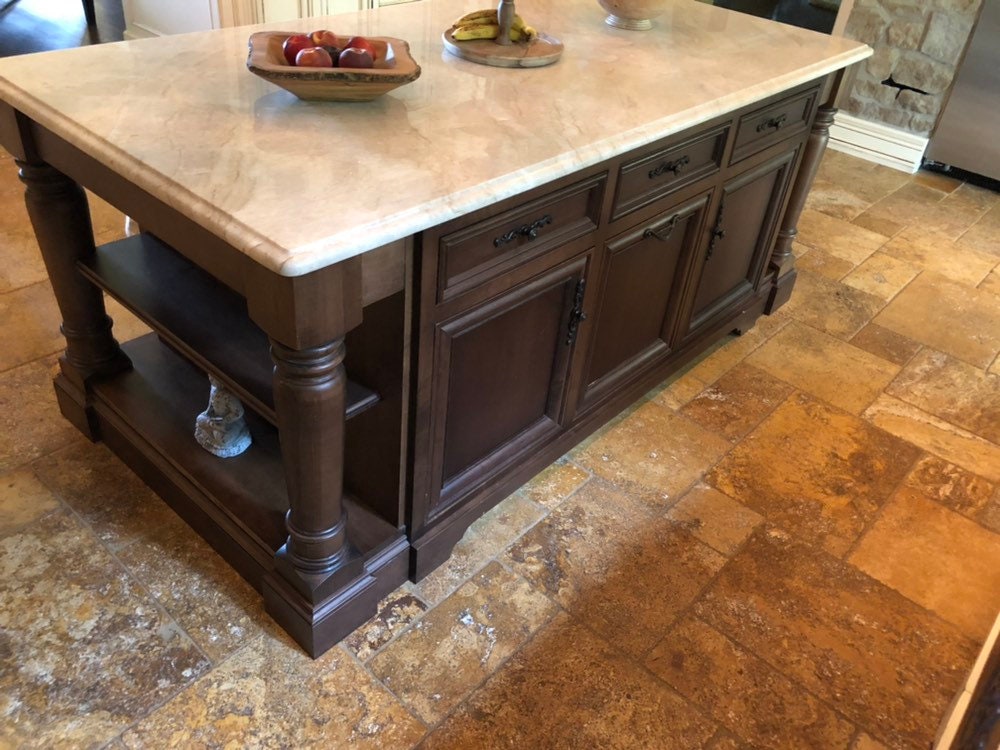Kitchen Island Legs: Add Capability and Style to Your Area
Kitchen Island Legs: Add Capability and Style to Your Area
Blog Article
An Overview to Picking the Ideal Kitchen Island for Your Home
Selecting the excellent cooking area island is a multi-faceted choice that can dramatically influence both the capability and aesthetic appeals of your home. Comprehending your kitchen area's spatial characteristics is the preliminary step, making certain that the island fits seamlessly without interfering with the circulation. Past area factors to consider, determining the key purpose of the island-- be it for meal prep work, dining, or extra storage-- is critical. The option of products and finishes likewise plays an important duty in balancing the island with your cooking area's general layout. As we explore these aspects better, the nuances of each choice will end up being clear.
Assessing Your Area
Prior to picking a kitchen island, it is important to thoroughly evaluate your area to make certain the enhancement will certainly be both functional and aesthetically pleasing. Begin by determining the available area, consisting of the width, size, and height of the cooking area. Accurate measurements are critical to avoid purchasing an island that bewilders the area or one that is overmuch tiny.
Take into consideration the existing format and just how the island will integrate with the existing website traffic circulation. A well-placed island needs to not hinder or obstruct pathways access to crucial appliances, such as the sink, refrigerator, and cooktop. Leave adequate clearance room-- commonly around 36 to 48 inches on all sides-- to permit comfortable motion and workspace performance.
Next, evaluate the natural light and sightlines within your kitchen area. An island that blocks a home window or interrupts visual cohesion can make the room really feel dark and confined. Consider just how the island's positioning will certainly affect lights and visibility, ensuring it boosts as opposed to diminishes the kitchen's setting.
Identifying the Objective
Establishing the purpose of your kitchen area island is a vital action in ensuring it meets your certain requirements and preferences. Prior to diving right into style or dimension factors to consider, it is vital to clarify what main feature the island will serve in your kitchen area. Will it be a central center for meal preparation, a laid-back eating area, or potentially an added storage space service?
Additionally, enough counter room for chopping and blending, along with obtainable storage for kitchen devices and active ingredients, can change the island right into a reliable workstation. Alternatively, if the island is meant to offer or facilitate social interactions as a dining location, seating arrangements end up being extremely important.

Selecting the Right Size
Selecting the appropriate dimension for your cooking area island is a balance of functionality and room optimization. An optimal kitchen area island need to provide ample work space while ensuring that movement around the kitchen continues to be unblocked. Begin by determining your kitchen area space; a minimal clearance of 36 to 42 inches around the island is needed to enable comfortable movement and ease of access.
The dimensions of the island need to show its desired usage. If the island will certainly serve primarily as a prep location, a size of 24 to 36 inches could be adequate.

Finally, ensure that the island's dimension enhances the total kitchen area layout, staying clear of any overwhelming presence that could diminish the cooking area's visual and utility - kitchen island legs. Mindful planning and specific measurements will certainly aid you accomplish a reliable and harmonious cooking area environment
Picking Materials and Finishes
After determining the ideal size for your kitchen area island, the following action entails choosing suitable materials and finishes. The choice of materials dramatically impacts both the aesthetic charm and capability of your kitchen island. Popular materials visit their website for counter tops include granite, butcher, and quartz block, each offering distinct advantages.
Along with the countertop, consider the products for the island base. Strong wood uses a timeless, sturdy appearance, while stainless steel supplies a smooth, contemporary look and is easy to tidy. Painted finishes can present a dash of color, with options varying from low-key pastels to strong, lively colors.
Pay interest to the sturdiness of coatings, especially in high-traffic locations, to maintain the island's look over time. Choosing the appropriate materials and coatings will improve both the functionality and aesthetic allure of your kitchen area island.
Incorporating Practical Features
Integrating useful functions right into your kitchen island can significantly improve its utility and convenience, changing it right into a flexible focal point of your kitchen. One essential function to take into consideration is extra storage space. Integrating cabinets, cabinets, and open shelving can supply much-needed space for kitchenware, tools, and small appliances, assisting to maintain a clutter-free environment.
An additional beneficial addition is an integrated sink or cooktop, which can simplify dish prep work and clean-up procedures. A sink can facilitate jobs such as cleaning vegetables and cleansing meals, while a cooktop can enable food preparation directly on the island, fostering a more interactive and social food preparation experience.
Consider integrating seating alternatives, specifically if your kitchen functions as a casual eating area. Bar feceses or built-in benches can transform the island right into a multifunctional area for dishes, research, or casual gatherings.
Last but not least, integrating electrical outlets into your cooking area island can boost its usefulness. Outlets provide practical access for small cooking area home appliances, billing terminals for electronic gadgets, and additional lights options.
Verdict

Prior to choosing a kitchen area island, it is crucial to extensively analyze your area to ensure the enhancement will be both practical and visually pleasing.Picking the appropriate size for your kitchen island is a balance of functionality and space optimization. kitchen island legs. An optimal kitchen island should give enough work area while making sure that movement around the kitchen stays unobstructed.Incorporating useful functions right into your kitchen island can dramatically enhance its utility and benefit, transforming it right into a versatile focal point of your kitchen.In verdict, picking the perfect cooking area island necessitates a thorough evaluation of the available area, clarity regarding its primary function, and careful consideration of the suitable dimension and materials
Report this page